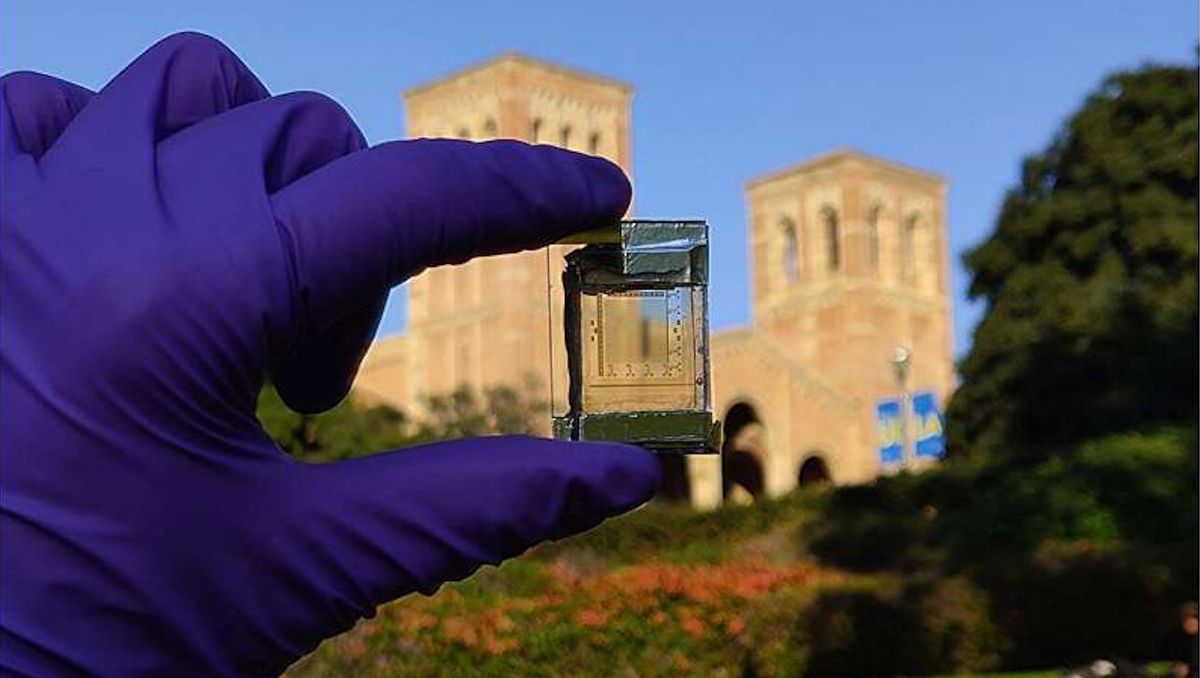An experimental two-dimensional semiconductor can harness the ability of ambient gentle to function a “good filter” and vastly enhance the standard of pictures taken with low cost cameras.
The platform, which measures 0.4 by 0.4 inch (1 by 1 centimeter), is made from a 100-by-100-pixel array that’s only a few atoms thick — that means the chip is clear. The machine was described in a examine revealed March 18 within the journal Nature Communications.
Every of the ten,000 pixels within the filter is an “optoelectronic neuron,” the identify the scientists have given the construction they constructed. Every construction consists of a clear phototransistor, which converts gentle particles into electrons, and a liquid crystal modulator that kinds a layer when all pixels are mixed. This layer was then linked to an array of electrodes.
This visible computing platform responds to ambient gentle and adjusts the pixels to make them partially clear or opaque to scale back vibrant spots or glare selectively. In experiments, the scientists mixed the smartphone digicam with the filter to scale back glare in photos taken with a smartphone digicam.
Associated: China develops new light-based chiplet that would energy synthetic common intelligence — the place AI is smarter than people
In addition to opening the door to higher-quality smartphone photos, this know-how can be utilized in sensing and detection techniques, equivalent to these present in autonomous automobiles, or to search out tiny defects in robotic meeting strains, the researchers stated. These value far an excessive amount of for the common client and are utilized in extra scientific and industrial settings.
“A cheap machine measuring a few centimeters might make a low-powered digicam work like a super-resolution digicam,” examine co-author Aydogan Ozcan, a professor {of electrical} and pc engineering at UCLA, stated in a assertion. “That will democratize entry to high-resolution imaging and sensing.”
Mild-based computing is an rising discipline with many experiments producing prototype gadgets and chips. For instance, scientists lately proposed a light-powered processor that would energy a superhuman synthetic intelligence (AI) system. One other crew lately proposed an identical chip that may be fitted into present parts to hurry up AI coaching.
However light-based computing conventionally wants high-powered infrared lasers to work. These function within the slim band of the electromagnetic spectrum and take in gentle over time, which may decelerate processing instances, the UCLA scientists stated within the assertion.
The choice is to make use of energy-inefficient supplies that may take in loads of gentle however are ineffective in purposes that want transparency — equivalent to pictures — as a result of they’re far too thick.
The distinction between earlier efforts and this new “good filter” is that it really works utilizing low-power ambient gentle that you’ll find anyplace as an alternative of high-powered lasers and makes use of a 2D clear semiconductor materials.
